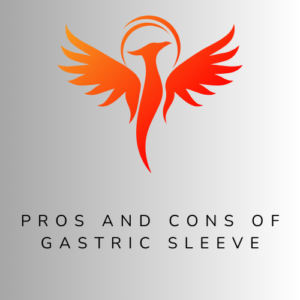Laser treatment for toenail fungus can be effective and non-invasive, but it is expensive and may require multiple sessions.
Pros of Laser Treatment for Toenail Fungus:
1Non-invasive: Laser treatment is a non-surgical procedure, making it less invasive than other medical options for toenail fungus.
2Quick procedure: Each session is relatively short, often lasting only 20-30 minutes.
3No need for medication: Laser treatment avoids the use of oral antifungal medications, which can have side effects, especially on the liver.
4Minimal pain: The procedure is generally painless or causes only mild discomfort for most patients.
5Targets the infection directly: The laser penetrates the nail to kill the fungus at its source without damaging surrounding tissue.
6No recovery time: Patients can resume their normal activities immediately after treatment, with no downtime required.
7No risk of drug interactions: Since it’s not a medication, laser treatment doesn’t interact with other drugs you may be taking.
8Safe for most patients: Laser treatment is suitable for individuals who cannot tolerate oral antifungal medications due to health reasons.
9Can be used in combination with other treatments: It can complement topical treatments for better results.
10Promotes nail regrowth: The treatment helps clear the infection, allowing for healthy nail regrowth over time.
11Higher patient satisfaction: Many people report positive outcomes and satisfaction with the treatment’s effectiveness.
12FDA-approved: Many laser devices used for toenail fungus treatment are FDA-approved, adding to their credibility and safety profile.
13No systemic side effects: Unlike oral medications, laser treatment does not carry the risk of systemic side effects like gastrointestinal issues or liver damage.
14Reduces risk of spread: Effective laser treatment can prevent the fungus from spreading to other nails or other people.
15Improves nail appearance: Clearing up the fungal infection can result in more aesthetically pleasing nails.
16Minimal risk of infection: Since the procedure is non-invasive, there is little to no risk of secondary infection.
17Can be a one-time solution: In some cases, a single laser session may be enough to eliminate the fungus, though multiple treatments are often required.
18Safe for diabetics: Diabetics, who may be at higher risk of complications from fungal infections, can safely undergo laser treatment.
19Convenient: Laser treatment can be performed in an outpatient setting, often in a podiatrist’s office.
20Effective for resistant infections: Laser treatment can be effective against fungal strains that are resistant to topical or oral antifungal treatments.
Cons of Laser Treatment for Toenail Fungus:
1Costly: Laser treatment can be expensive, and many insurance plans do not cover it, as it is often considered a cosmetic procedure.
2Multiple sessions required: Several treatment sessions may be necessary to fully eradicate the fungus, adding to the cost and time commitment.
3No immediate results: It can take months for the treated nail to grow out and for noticeable improvements to be seen.
4Not always effective: While many patients experience success, laser treatment is not guaranteed to work for everyone, and some may need additional treatments.
5Limited long-term studies: Although short-term results are promising, there is limited long-term data on the effectiveness of laser treatment for toenail fungus.
6Recurrence possible: The fungus may return even after successful treatment, requiring additional sessions or alternative therapies.
7Availability issues: Laser treatment for toenail fungus may not be available in all locations, requiring travel to specialized clinics.
8May not be suitable for severe cases: Laser treatment may be less effective for individuals with advanced or severe fungal infections, where the nail is significantly damaged.
9Out-of-pocket expenses: Since it’s often not covered by insurance, patients must pay the full cost of treatment themselves.
10Unclear mechanism of action: The exact way in which the laser kills the fungus is not fully understood, leading to uncertainty about why it may not work for some people.
11No guarantee of complete clearance: Even after multiple treatments, there is no guarantee that all fungal spores will be eliminated.
12Potential need for maintenance: Some patients may require maintenance treatments to prevent recurrence.
13Not effective for all types of toenail fungus: The treatment may be less effective on certain strains of toenail fungus or in patients with mixed infections.
14Pain for sensitive individuals: While most find the procedure painless, some individuals with sensitive skin may experience discomfort during treatment.
15Nail thickness may affect results: Very thick or severely damaged nails may reduce the laser’s ability to penetrate and treat the fungus effectively.
16Expensive for widespread infections: If multiple nails are affected, the cost of treating all nails can be significantly higher.
17Inconsistent practitioner skill levels: The success of laser treatment can depend on the expertise and equipment of the practitioner performing it.
18No immediate elimination of infection: Though the laser kills the fungus, the nail itself remains infected until it grows out, leaving an unsightly appearance for some time.
19Potential for overpromotion: Some clinics may overpromise the results of laser treatment, leading to unrealistic patient expectations.
20Less effective for deeply embedded infections: If the fungus is deeply embedded in the nail bed or surrounding tissue, laser treatment may not fully penetrate to eliminate the infection.



